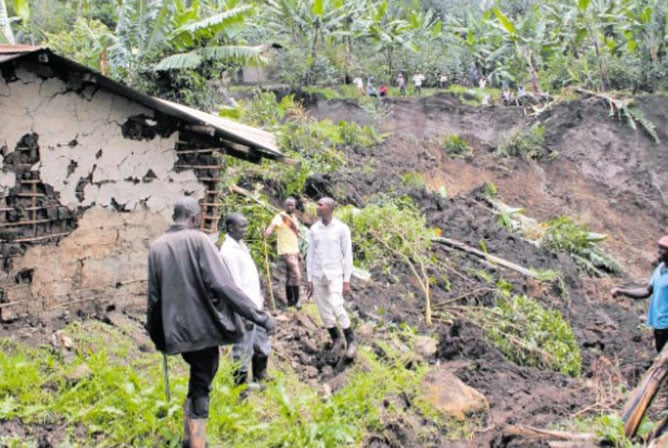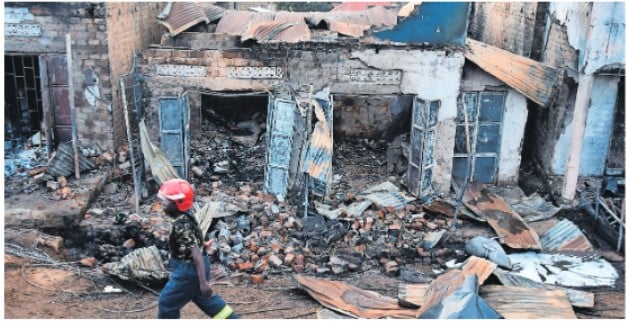Effective and efficient safety plans are key

Residents in Namisuni sub-county, Bulambuli District after a landslide. PHOTO | FRED WAMBEDE
What you need to know:
- The displaced and homeless need to be helped but more than that, communities especially those living in flood prone and landslide prone areas need to be continually sensitized and the dangers in their habitats and how to safeguard their lives and properties.
The rains are coming down in earnest and with them come blessings but also landslides and a whole lot of destruction of crops, roads, houses and in worst case scenarios, lives. This is not a new problem, it happens every time there is persistent heavy rain.
Yesterday, we highlighted stories from different parts of the country of how people have been negatively affected by the rain. For instance, in Bulambuli District, landslides occurred in Namisuni and Sisiyi sub-counties on Sunday and a district assessment indicates that 464 households were destroyed, 371 houses are at risk and an estimated 2,000 people have been affected in 26 villages.
In Katakwi District, persistent rains in Palam, Magoro, Okulunyo and Guyaguya sub counties also faced a lot of destruction. Bukedea District experienced crop damage, with 3,780 cassava gardens waterlogged and several villages cut off due to flooded roads.
Jinja City Northern Division is also suffering clogged trenches and poor drainage which has worsened the flooding.
In Buyende District the heavy rains cut off the main road connecting Kagulu to Buyende Town. In Pakwach District, the rains have led to a rise in bilharzia ad malaria cases. In Koboko, two sub-counties Lobule and Ludara were hit by heavy rains, leaving 504 animals dead and seven water sources contaminated.
In Rukiga District, a 13-year-old was struck by lightning and in Kasese district, two children aged 11 and four are feared dead after attempting to cross River Sebwe which was flooded due to heavy rains. It is reported that they were swept away by the strong currents.
These are only a few of the many stories of destruction that have been and continue to be occasioned by persistent heavy rains and many of them are avoidable especially because, they happen every time there is rain in these areas. Which begs the question, why do such incidents keep happening with no immediate emergency contingency plan?
Are we under-equipped to handle these cases in a timely manner? That aside, some of these cases of flooding are exacerbated because of roads that are constructed without proper drainage. Why should we keep paying for poor road constructions with our livelihoods?
The displaced and homeless need to be helped but more than that, communities especially those living in flood prone and landslide prone areas need to be continually sensitized and the dangers in their habitats and how to safeguard their lives and properties.
These sensitization drives have got to be continual as there are those that are too stubborn to move or adhere to safety precautions suggested. Let’s improve our preparation for such seasons and emergency response plans as well.



